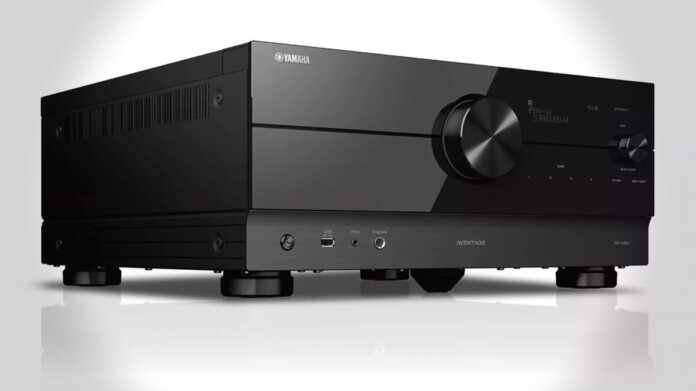With the latest firmware update, Yamaha has eliminated an annoying lock. A new feature again raises some question marks.
The clear message first: With the release of firmware 1.73 for its current audio/video receivers RX-A8A, RX-A6A and RX-A4A, Yamaha has finally got rid of a nuisance – at least for these models. We are talking about the so-called “cross-upmixing lock” with which the devices mentioned came onto the market last year.
This block has so far prevented users of a 3D audio system from being able to use the “DTS Neural:X” upmixer from DTS on the devices concerned in order to add additional height information to audio tracks in the Dolby Digital Plus or Dolby TrueHD formats to let. Conversely, the Dolby Surround Upmixer (DSU) included in Dolby Atmos could not be used for DTS, DTS-HD High Resolution and DTS-HD Master Audio. According to Yamaha, both options are now unrestricted after installing the firmware.
Confusion about Auro-3D
However, the 3rd point in the official release notes, which states “Support for AuroMatic processing for Dolby Atmos/DTS:X (RX-A8A and RX-A6A only)” (translation by us), caused great irritation.
To understand this, you have to know that the AuroMatic is the (extremely popular) upmixer of the 3D sound format Auro-3D. The RX-A8A and RX-A6A models are the first devices from Yamaha to support this format (alongside Dolby Atmos and DTS:X) and bring the corresponding upmixer. The RX-A4A does not offer Auro-3D
Up until now, the AuroMatic worked by calculating the height channels from a soundtrack with 1.0 to 7.1 channels, which did not take into account the additional height information available with Dolby Atmos and DTS:X – consisting of objects and metadata about their position in three-dimensional space.
Late bloomers in the fast lane?
The information in the release notes can now be understood to mean that the AuroMatic in the relevant Yamaha receivers can also process the Dolby Atmos or DTS:X information for the height information for the first time. This gives the devices a technical advantage over the models from Sound United (Denon and Marantz), which have been able to use Auro-3D for some time, but use the AuroMatic without using the height information.
Questions from c’t at Yamaha on this point at the IFA were unsuccessful. No company representative was available on site with whom c’t could finally clarify this point. When asked, it was only said that they did not want to comment on this question (yet).

(Image: Nico Jurran / c’t)
However, c’t reached Wilfried van Baelen, who founded Auro Technologies and launched Auro-3D. He confirmed that the AuroMatic in the Yamaha receivers evaluates Dolby Atmos and DTS:X including the height information after the update – and emphasized once again that the devices are the first AV receivers to have this capability.
What shoud that?
At the moment, however, the question still remains as to what advantage results from processing the additional height information. So far, the author is not aware of any case in which a version extrapolated using the basic information from the Atmos or DTS:X soundtrack (without 3D metadata) lacked information present in the height channels that was present in the native 3D mixes . In other words: So far, nothing has been missing at the top compared to Dolby Atmos and DTS:X, only additional height effects have always been added.
In relevant Internet forums, there was also a discussion that after the update, the Yamaha receivers can also do an upmix for configurations with a third level (Voice of God, Center Height). For example, a voice-of-god channel for speakers under the ceiling has not been supported so far (unlike the devices from Denon and Marantz). So far, however, c’t has not received any confirmation.
Finally, the question arises as to how the processing is technically designed – i.e. whether the receiver first completely decodes Dolby Atmos or DTS:X and then uses the AuroMatic or whether the process already starts with the decoding of the 3D sound formats. Dolby and DTS are likely to have vetoed the latter option.
(nij)














